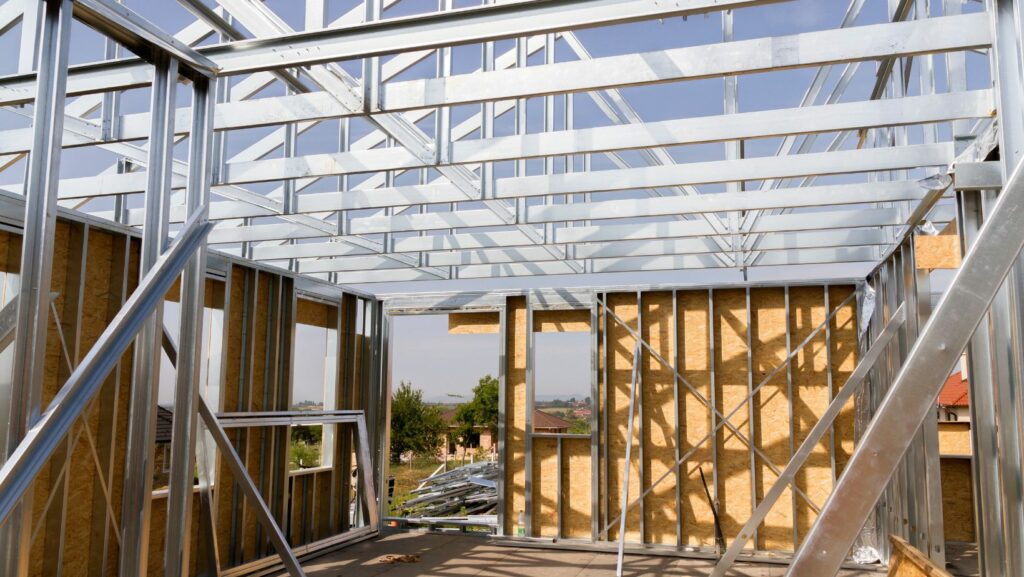Behind every beautiful home lies a structure that holds everything together — often quite literally. While we tend to focus on finishes, fixtures, and interior styling, the material that supports the walls, roof, and floors is what determines how well a home will stand the test of time.
Increasingly, builders and homeowners alike are turning toward smarter, stronger structural options that offer not just durability but long-term value. Among the most talked-about solutions are steel house frames, which are becoming a go-to choice in modern construction for good reason.
So, what makes this framing option such a smart investment? Let’s explore the key benefits, practical considerations, and why more new builds are embracing steel over traditional timber.
Why Framing Material Matters More Than You Think
Framing forms the skeletal structure of a home. It affects everything from how well the home withstands weather conditions to how straight the walls stay to how energy-efficient the building can be. Traditionally, timber has been the most common choice — but it’s no longer the only one worth considering.
Steel framing provides a consistently straight, strong base for construction, reducing many of the issues that arise from warped or shifting materials. In regions prone to termites, high humidity, or bushfires, steel becomes not only a practical option but a safety-enhancing one.
Key Benefits of Steel Framing
Steel framing isn’t just a trend — it’s a response to growing demand for resilient, low-maintenance building solutions.

Here’s why steel frames are increasingly being used in both residential and commercial builds:
1. Strength and Stability
Steel doesn’t warp, twist, or shrink over time like timber can. This means fewer issues with cracking plaster, jamming doors, or uneven floors down the line. The structural integrity of steel provides a more precise and predictable build — a significant advantage for builders aiming for long-lasting results.
2. Termite and Pest Resistance
Unlike timber, steel offers zero appeal to termites and other wood-boring pests. For homeowners, this removes the need for ongoing chemical treatments or inspections, offering peace of mind and cost savings over time.
3. Fire Safety
Steel is non-combustible, making it a smart option in bushfire-prone areas or any location where fire risk is a concern. Some insurance providers may even offer better premiums for steel-framed homes due to this added layer of protection.
4. Lightweight, Yet Strong
Despite its strength, steel is surprisingly lightweight. This makes it easier to transport and work on-site, especially in prefabricated systems where precision is critical. It also puts less stress on the foundation — a subtle benefit that contributes to overall structural longevity.
5. Environmentally Friendly
Steel is 100% recyclable and often produced using recycled materials. Unlike timber, which relies on resource-intensive logging and processing, steel can be part of a closed-loop supply chain. For eco-conscious builders and buyers, that’s a meaningful plus.
Considerations When Building with Steel
While steel framing offers many benefits, it’s worth noting a few considerations before making the switch:

- Initial Cost: Steel framing can come at a higher upfront cost than timber. However, the long-term savings in maintenance, pest protection, and structural reliability often balance out or surpass the difference.
- Thermal Conductivity: Steel conducts heat more readily than timber, so appropriate insulation and thermal breaks must be included in the build to maintain energy efficiency.
- Specialized Labour: Builders must be familiar with working with steel systems, especially when it comes to cutting, fastening, or assembling prefabricated components. Fortunately, this is becoming less of a barrier as more tradespeople are trained in steel framing systems.
Ideal Applications for Steel Framing
Steel frames are especially well-suited to:
- Coastal areas: Where moisture and salt air can accelerate timber degradation.
- High-termite-risk zones: These are where ongoing treatment and inspection costs add up quickly.
- Bushfire-prone regions: Where non-combustible materials are a necessity.
- Architecturally complex builds: Where straight lines and structural accuracy are non-negotiable.
That said, steel can be used in virtually any home design — from single-story builds to multi-unit developments. Its versatility and performance make it a strong candidate for any future-focused construction.
As expectations for homes continue to shift — with greater emphasis on safety, longevity, and environmental responsibility — so too must the materials we use to build them. Steel framing offers a dependable backbone for modern homes, delivering resilience where it matters most. For those looking to build not just for today but for the decades to come, it’s an option that deserves serious consideration.


